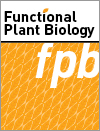Agricultural productivity has been affected by climate change. This study investigated the effects of conventional and conservation tillage methods on wheat (Triticum aestivum) and maize (Zea mays) physiology. Our findings suggest that conservation tillage is a promising practice to increase precipitation water storage, soil water conservation and crop yield in the regions with medium to low mean annual precipitation and medium to high mean annual temperature.
This article belongs to the Collection Functional Genomics for Developing Climate Resilient Crops.






